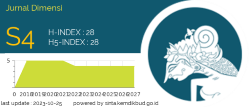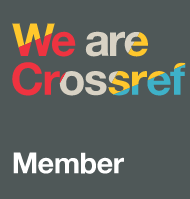ANALISIS FAKTOR YANG MEMPENGARUHI MINAT PEMBELIAN MILENIAL TERHADAP LOCAL COFFEE SHOP
Abstract
Tujuan penelitian ini adalah untuk mengetahui seberapa besar pengaruh dari electronic word of mouth dan brand image dengan purchase intention local coffee shop kaum milenial di Batam, Indonesia. Metode penelitian dari penelitian ini adalah convenience sampling dengan structural equation modeling untuk analisa electronic word of mouth, brand image terhadap variabel dependen (purchase intention). Hasil dari penelitian ini menunjukkan electronic word of mouth berpengaruh signifikan positif terhadap brand image dan purchase intention. Electronic word of mouth memiliki hubungan signifikan positif langsung terhadap purchase intention. Penelitian ini dapat menjadi acuan untuk meningkatkan daya saing kopi tiam local di Batam..
Keywords
Full Text:
PDFReferences
Abubakar Mohammed Abubakar, Mustafa Ilkan, P. S. (2016). Marketing Intelligence & Planning Article information : Marketing Intelligence & Planning, 33, 67–89. https://doi.org/10.1108/MIP-01-2016-0006
Bagozzi, Richard P; Johann Baumgartner; Youjae YI.(1989). An Investigation Into The Role Of Intentions As Mediators Of The Attitude-Behavior Relationship. Journal of Economic Psychology.10 (1989) 35-62. North-Holland
Charo, N., Sharma, P., Shaikh, S., Haseeb, A., & Sufya, M. Z. (2015). Determining the Impact of Ewom on Brand Image and Purchase Intention through Adoption of Online Opinions.International Journal of Humanities and Management Sciences, 3(1), 41–46.
Constantinides, E., & Fountain, S. j. (2008). Conceptual foundation and marketing issues. Journal of Direct, Data and Digital Marketing Practice , 9 (3), 231–244
Ertimur, B., & Gilly, M. C. (2012). So Whaddya Think? Consumers Create Ads and Other Consumers Critique Them. journel of interactive Marketing , 26 (1), 115–130.
Hair, J.F., W.C. Black, B.J. Babin &R.E. Anderson, 2010. Multivariate Data Analysis. Upper Saddle River, NJ: Prentice-Hall
Hennig-Thurau, T., Gwinner, K. P., Walsh, G., & Gremler, D. D. (2004). Electronic word-of-mouth via consumer-opinion platforms: What motivates consumers to articulate themselves on the Internet?Journal of Interactive Marketing, 18(1), 38–52. https://doi.org/10.1002/dir.10073
Jalilvand, M. R., & Samiei, N. (2012). The effect of electronic word of mouth on brand image and purchase intention. An empirical study in the automobile. Marketing Intelligence&Planning, 30(4), 460–476. https://doi.org/10.1108/02634501211231946
Keller, K. L. (2009). Building strong brands in a modern marketing communications environment. Journal of Marketing Communications , 15 (2), 139–155.
Kementerian Pertanian.(2018). https://databoks.katadata.co.id/datapublish/2018/07/31/2021-konsumsi-kopi-indonesia-diprediksi-mencapai-370-ribu-ton
Kotler, Philip. Keller, K. L. 2009. Manajemen Pemasaran, Edisi 13, Jilid 1. Jakarta : Erlangga.
Kozinets, R. V., Hemetsberger, A., & Schau, H. J. (2008). Collective Innovation in the Age of Networked Marketing. Journal of Macromarketing , 28 (4), 339-354.
Kunja, S. R., & GVRK, A. (2017). Examining the effect of eWOM on the customer purchase intention through value co-creation (VCC) in social networking sites (SNSs): A study of select Facebook fan pages of smartphone brands in India. Management Research Review, (Vcc). https://doi.org/10.1108/MRR-04-2017-0128
Lim, Weng Marc, Teck Weng Jee, Kar Seng Loh & Elena Gregoria Chin- Fern Chai (2019): Ambience and social interaction effects on customer patronage of traditional coffeehouses: Insights from kopitiams, Journal of Hospitality Marketing & Management, DOI: 10.1080/19368623.2019.1603128
Lin, C., Wu, Y. S., & Chen, J. C. V. (2013). Electronic word-of-mouth: The moderating roles of product involvement and brand image. Proceedings of 2013 International Conference on Technology Innovation and Industrial Management, 39–47
Shukla, P. (2010). Impact of interpersonal influences, brand origin and brand image on luxury purchase intentions: Measuring interfunctional interactions and a cross-national comparison. Journal of World Business, 46(2), 242–252. https://doi.org/10.1016/j.jwb.2010.11.002
Lin, Chinho, Yi Shuang Wu, Jeng-Chung Victor Chen. (2013). Electronic Word of Mouth: The Moderating Roles Of Product Involvement And Brand Image. Thailand.
MiladFarzin, MajidFattahi. (2018). eWOM through social networking sites and impact on purchase intention and brand image in Iran. Journal of Advances in Management Research.15(2). 161-183
Podsakoff, Philip M., Scott B. MacKenzie, &Nathan P. Podsakoff. (2003). Common Method Biases in Behavioral Research: A Critical Review of the Literature and Recommended Remedies. Journal of Applied Psychology .Vol. 88, No. 5, 879–903
Shahrinaz, I., Kusuma, J., Yacob, Y., Rahman, D. H. A. A., & Mahdi, A. F. (2016). Relationship and Impact of e‐WOM and Brand Image Towards Purchase Intention of Smartphone ?Journal of Scientific Research and Development, 3(5), 117–124.
Shen, L. (2007). Editorial Journal of Interactive Marketing, 21(2), 2–5. https://doi.org/10.1002/dir
Tsimonis, G., & Dimitriadis, S. (2014). Brand strategies in social media. Marketing Intelligence & Planning , 22 (3), 328 - 344.
Wahyunanda Kusuma Pertiwi. (2018). "Mayoritas Orang Indonesia Bisa Internetan Seharian", https://tekno.kompas.com/read/2018/02/22/12010087/mayoritas-orang-indonesia-bisa-internetan-seharian.
Vinzi V. Esposito, et al.( 2010), Handbook of Partial Least Squares, Springer Handbooks of Computational Statistics, DOI 10.1007/978-3-540-32827-8 31
DOI: https://doi.org/10.33373/dms.v8i3.2215
Refbacks
- There are currently no refbacks.

This work is licensed under a Creative Commons Attribution-NonCommercial-ShareAlike 4.0 International License.











